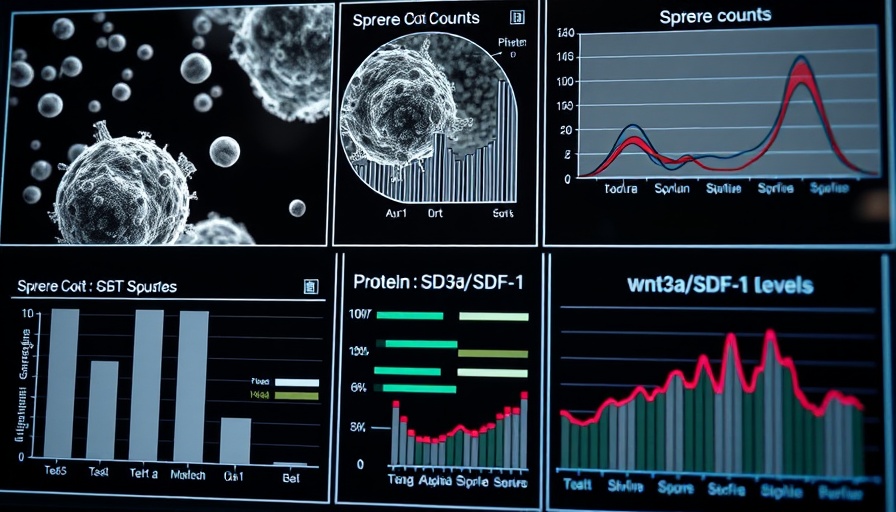
Understanding the Role of CAFs in Prostate Cancer Stemness
Cancer-associated fibroblasts (CAFs) are gaining recognition for their critical role in tumor microenvironments, particularly in prostate cancer. Recent research involving castration-resistant prostate cancer (CRPC) highlights their influence on the stemness of prostate cancer stem cells (PCSCs). This stems from an investigation into the pathways activated by CAFs, specifically the Wnt/β-catenin and SDF-1/CXCR4 signaling pathways, which have been implicated in tumor progression and therapeutic resistance.
The Cancer Stem Cell Hypothesis and Its Implications
The concept of cancer stem cells emerged from the idea that certain tumor cells possess stem-like properties, allowing them not only to proliferate vigorously but also to adapt to hostile environments. Within prostate cancer, the transition from hormone-sensitive forms to CRPC can create a population of cells with enhanced stemness, making treatment increasingly challenging. Various studies suggest that the presence of CAFs significantly enhances this stemness, ultimately aiding in cancer survival and adaptation.
Mechanisms Underpinning Stemness: The Wnt and SDF-1 Pathways
Insights from ongoing research indicate that CAFs can activate the Wnt/β-catenin pathway through the expression of Wnt3a, which subsequently elevates levels of β-catenin, a key player in stem cell maintenance. In parallel, the SDF-1/CXCR4 signaling axis promotes cell migration and proliferation. Investigations have shown that inhibiting either of these pathways can reduce the stemness of PCSCs, making them less aggressive and more amenable to treatment. Specifically, the presence of CXCR4 in CRPC tissues correlates positively with disease severity, prompting the need for potential therapeutic targets in these pathways.
Implications for Future Therapeutics
The growing understanding of CAF interactions within prostate cancer microenvironments emphasizes the urgent need for targeted therapies that can inhibit the proliferation of PCSCs by disrupting the activation of pathways like Wnt/β-catenin and SDF-1/CXCR4. By focusing on these pathways, new interventions could potentially revolutionize the treatment landscape for CRPC.
Broader Context: Rising Prostate Cancer Incidences
The urgency of addressing CRPC is underscored by alarming statistics. In 2022 alone, prostate cancer accounted for approximately 1.5 million new instances globally, positioning it as a major health crisis for men. As CRPC represents a significant and lethal progression of this disease, the advances in understanding the biological mechanisms of stemness provide avenues not only for improved medical intervention but also for understanding the complexity of aging processes at the cellular level.
Actionable Insights on Cellular Health
Maintaining cellular health and rejuvenating cellular function are crucial in delaying the onset of age-related diseases, including cancer. Practices such as optimizing mitochondrial function, boosting levels of NAD+, and engaging in autophagy through nutrition and lifestyle choices can support cellular vitality. Empowering health-conscious individuals through knowledge about perpetuating youthful cellular environments is pivotal. As research continues to evolve, the implications of stem cell therapies and regenerative medicine offer promise not only for cancer management but also for enhancing overall vitality and well-being.
Conclusion: Move Toward Informed Health Choices
Understanding the intricate biological mechanisms behind CRPC and stem cell dynamics enhances our capacity to make science-backed health decisions. By integrating these insights into your approach to cellular rejuvenation and overall health, you're not just enhancing vitality but potentially paving the way for a future less impacted by chronic illnesses. Staying informed on developments in cellular health can equip you to make proactive choices, setting a foundation for enduring wellness.
 Add Row
Add Row  Add
Add 




Write A Comment